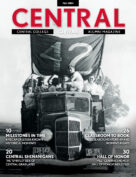 The State of Iowa has several well-intended programs to help students—some as young as 13—plan their futures. I’m all for talking with students early and often about educational and career opportunities. These conversations can serve them well. They gradually develop a sense of what interests them and where their aptitudes lie.
The State of Iowa has several well-intended programs to help students—some as young as 13—plan their futures. I’m all for talking with students early and often about educational and career opportunities. These conversations can serve them well. They gradually develop a sense of what interests them and where their aptitudes lie.
But I get concerned when some educators and parents believe a student so young must form a durable plan. Programs that try to lock a student into a fixed course for high school and college are misguided. Very few students in their early teens understand themselves or the world well enough to determine a reliable pathway.
Last year, during one of our visit days for prospective students, a parent asked me what percentage of Central students change majors. At another institution she visited the number was above threequarters. I said that in our educational setting that percentage is rather typical. A liberal arts education is a journey of exploration. Each student is on a unique path. Many students certain in their first year of college they had selected the correct major discover through time an alternate pathway is more desirable.
It reminds me of the proverb, “God writes straight with crooked lines.”
The path can get a bit messy. But that’s OK. It’s part of the journey. I have a question for parents when these conversations emerge: “How many of us had it right when we were 17 or 18 years old?” At that point, most parents in the room look at their shoes.
We all know people who completed an educational course of study or an early career experience who decided the path they had chosen was not right for them. Rather than painting them a failure, we should celebrate them as a learner on a journey. Some of the most successful internships are those from which the student returns and says, “I never want to do that again!” They may have saved 10 years by disqualifying a potential career pathway after simply testing it.
Some policymakers might prefer students pick their educational and career pathway when they are 13 years old. That would be more cost effective, but far less human. The adversity we face, the twists and turns we encounter and the resilience we demonstrate all belong to our education. Even when it’s a bit messy.
Mark: My Words
Read more of President Putnam’s writing at president.central.edu.












To encourage serious, intellectual discourse on Civitas, please include your first and last name when commenting. Anonymous comments will be removed.
Comments are closed.